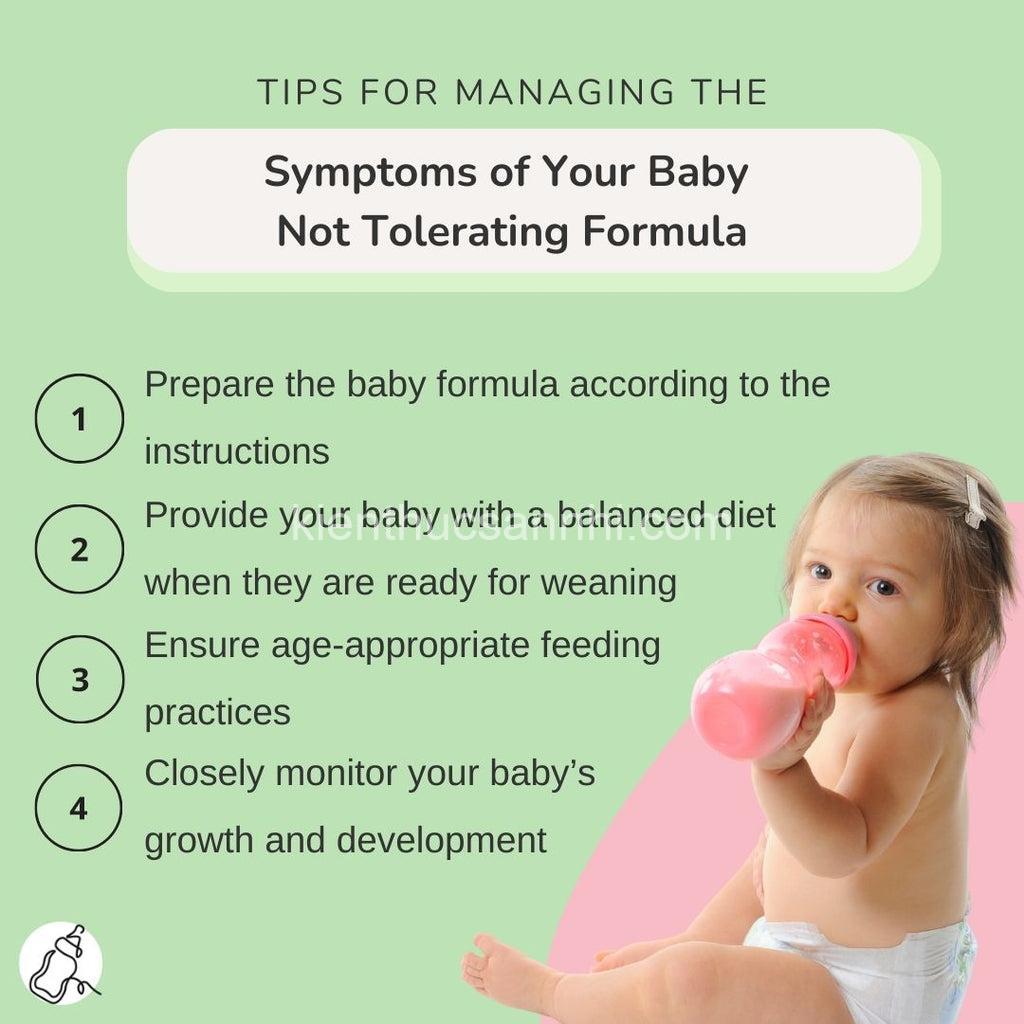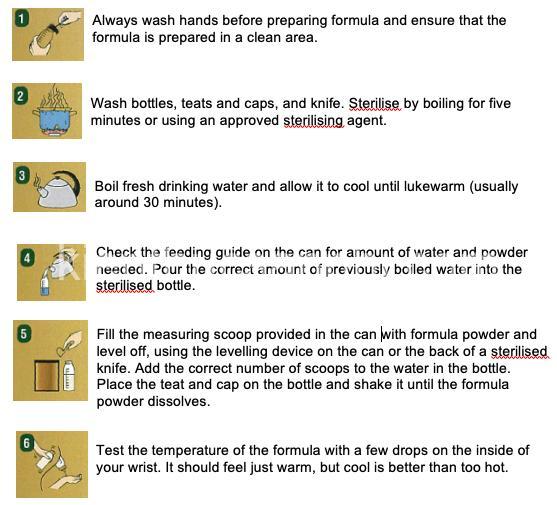
Baby Growing on Formula: Understanding Growth & Factors. In today’s article, kienthucsannhi.com will explore with you in the most detailed and complete way. See now!
Understanding Baby Growth on Formula
Every baby grows at their own pace, but there are general guidelines to help you determine if your little one is developing as expected. One of the most valuable tools for tracking growth is the growth chart. This chart compares your baby’s weight, length, and head circumference to other babies of the same age. It’s important to understand how these charts work.
The growth chart doesn’t provide a strict formula for growth, but rather a visual representation of your baby’s development compared to others. You’ll notice different percentile ranges on the chart, which are simply a way to measure your baby’s progress relative to other babies. For example, if your baby falls within the 50th percentile for weight, they are growing at the average rate for their age.
Key Growth Indicators:
When you track your baby’s growth, there are some key indicators to pay attention to.
Weight Gain: You’ll notice expected weight gain for different age groups on the growth chart. For example, a newborn might gain an average of 1.5 to 2 pounds per week, while a baby between 4 and 6 months might gain an average of 5 to 7 ounces per week. Remember, there will be some variation, and every baby grows at their own pace.
Length/Height Growth: You’ll also track your baby’s length or height growth using the growth chart. It’s normal for babies to grow about an inch a month during the first year of life.
Head Circumference Growth: The growth chart will also show expected head circumference growth, which is a measure of your baby’s brain development. Babies typically gain about a half inch per month during the first 6 months and about a quarter inch per month from 6 months to a year.
Other Signs of Healthy Growth: Beyond these measures, there are other signs that your baby is thriving:
- Active Behavior: Your baby should be alert and active.
- Good Urine Output: Your baby should have at least six wet diapers per day.
- Healthy Skin: Your baby’s skin should be clear and free of any rashes.

Factors Affecting Growth On Formula
Several factors can influence your baby’s growth on formula, so it’s essential to understand these factors.
Formula Choice: The formula type you choose can play a role in your baby’s growth. There are several types of formula available, including:
- Cow’s milk-based formula: This is the most common type of formula and is generally well-tolerated by babies.
- Soy-based formula: This is an alternative for babies who are allergic to cow’s milk protein.
- Hydrolyzed formula: This is a specialized formula for babies with severe allergies or digestive problems.
It’s crucial to discuss your baby’s needs with your pediatrician to determine the best formula type for them. They can help you choose a formula that meets their individual requirements.
Feeding Schedule: The feeding schedule you establish can also impact your baby’s growth. It’s important to feed your baby on demand, meaning you feed them when they show signs of hunger, rather than following a strict schedule.
Individual Baby Needs: Every baby is unique, and their growth patterns will vary. Even if you’re doing everything right, your baby might grow a bit slower or faster than others. Remember that growth is a gradual process, and you shouldn’t worry if your baby is in the lower or higher percentile on the growth chart.
Monitoring Your Baby’s Growth
Regular check-ups with a pediatrician are crucial to monitor your baby’s growth. A pediatrician can assess your baby’s overall health and track their progress on the growth chart.
The pediatrician will use the growth chart to monitor your baby’s weight, length, and head circumference. They will also consider other factors, such as your baby’s activity level, feeding habits, and overall health.
It’s important to consult your pediatrician if you have any concerns about your baby’s growth. They can help you determine if your baby is growing appropriately and address any concerns you might have.
Getting Help and Support
If you have any questions or concerns about your baby’s growth, don’t hesitate to consult a pediatrician. They can provide you with personalized guidance and support.
You can also find valuable resources and information from trusted sources like your baby’s healthcare provider or reputable organizations.
Conclusion
Monitoring your baby’s growth on formula is crucial for ensuring their healthy development. By understanding key growth indicators, factors affecting growth, and the importance of regular check-ups, you can feel confident in your baby’s progress. Remember, every baby is unique and grows at their own pace. If you have any questions or concerns, don’t hesitate to reach out to your pediatrician. For more information about raising a healthy baby, visit kienthucsannhi.com. Be sure to share your experiences and ask questions in the comments below!
FAQs:
How do I know if the formula I’m using is right for my baby?
The best way to determine if the formula you’re using is right for your baby is to consult with your pediatrician. They can assess your baby’s individual needs and recommend a formula that meets those needs. Factors that might influence your pediatrician’s recommendation include your baby’s age, allergies, and any digestive issues they may have.
What if my baby isn’t gaining weight as expected?
If you’re concerned about your baby’s weight gain, it’s important to speak with your pediatrician. They can assess your baby’s overall health, determine if there are any underlying medical conditions, and offer advice on how to support their growth.
How often should I feed my baby formula?
The frequency of feeding your baby formula will depend on their age and individual needs. In general, newborns will need to feed every 2-3 hours, while older babies may feed less frequently. Your pediatrician can provide specific guidance on feeding frequency based on your baby’s growth and development.
What if my baby is gaining weight too quickly?
While it’s generally a good thing for a baby to gain weight, gaining weight too quickly can be a concern. If you notice your baby is gaining weight too rapidly, it’s important to consult with your pediatrician. They can assess your baby’s overall health and recommend adjustments to your feeding schedule or formula choice if necessary.
How can I tell if my baby is getting enough formula?
There are several signs that your baby is getting enough formula, including:
- A healthy weight gain: Your baby should be gaining weight according to their individual growth chart.
- Six to eight wet diapers a day: This indicates that your baby is getting enough fluids.
- Frequent bowel movements: Your baby should have regular bowel movements, usually once or twice a day.
- Satisfied after feedings: Your baby should seem content and relaxed after feedings, not fussy or hungry.
If you have any concerns about your baby’s feeding, talk to your pediatrician.
Entity – Attribute – Value:
- Baby – Age – Months
- Baby – Weight – Kilograms/Pounds
- Baby – Height – Centimeters/Inches
- Baby – Head Circumference – Centimeters/Inches
- Baby – Feeding Schedule – Frequency (e.g., every 3 hours)
- Baby – Formula Type – Cow’s milk-based, soy-based, etc.
- Baby – Growth – Percentile on growth chart
- Formula – Brand – Name
- Formula – Type – Cow’s milk-based, soy-based, etc.
- Formula – Preparation – Instructions
- Formula – Cost – Price per container
- Doctor – Specialty – Pediatrics
- Doctor – Name – Full name
- Doctor – Contact Information – Phone number, email address
- Doctor – Availability – Appointment scheduling information
- Growth Chart – Type – Weight, height, head circumference
- Growth Chart – Percentile – Range
- Growth Chart – Interpretation – What different percentiles mean
- Feeding Schedule – Frequency – Times per day
- Feeding Schedule – Duration – Length of each feeding session
Entity, Relation, Entity:
- Baby – Feeds – Formula
- Baby – Grows – Height
- Baby – Grows – Weight
- Baby – Grows – Head Circumference
- Baby – Consults – Doctor
- Baby – Uses – Formula Type
- Formula – Provides – Nutrition
- Formula – Has – Brand
- Doctor – Monitors – Baby’s Growth
- Doctor – Recommends – Formula Type
- Doctor – Explains – Growth Chart
- Doctor – Answers – Parent’s Questions
- Growth Chart – Shows – Baby’s Growth
- Growth Chart – Compares – Baby’s Growth to other babies
- Parent – Worries – Baby’s Growth
- Parent – Wants – Baby to grow appropriately
- Parent – Learns – About formula feeding
- Parent – Chooses – Formula type
- Parent – Tracks – Baby’s growth
- Parent – Consult – Doctor
Semantic Triples
- (Baby, has_age, 6 months)
- (Baby, weighs, 8 kilograms)
- (Baby, has_height, 65 centimeters)
- (Baby, hasheadcircumference, 42 centimeters)
- (Baby, uses, cow’s milk-based formula)
- (Baby, feedsondemand)
- (Baby, isin90thpercentilefor_weight)
- (Baby, isseenby, Dr. Smith)
- (Formula, ismadeby, Enfamil)
- (Formula, contains, lactose)
- (Formula, isrecommendedfor, infants)
- (Doctor, specializes_in, pediatrics)
- (Doctor, provides, adviceonformula_feeding)
- (Growth Chart, shows, baby’sgrowthover_time)
- (Growth Chart, compares, baby’sgrowthtootherbabies)
- (Parent, wantstoensure, babygrowsappropriately)
- (Parent, seeksinformationon, formula_feeding)
- (Parent, monitors, baby’sweightgain)
- (Parent, consults_with, doctor)







